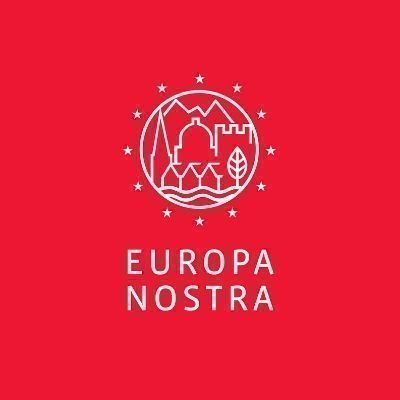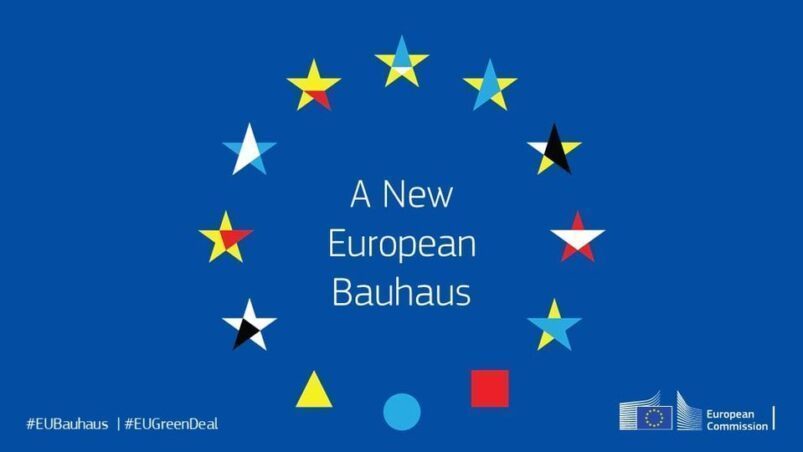At the beginning of March, the New European Bauhaus movement (NEB) announced its first selection of partners. Thirteen organisations, specialised in different fields, such as architecture, design or electronics, will support the ambitious initiative. Europa Nostra aims to be the voice for cultural heritage.
The NEB initiative aims to serve as a collaborative design and creative space to support the European Green Deal and bring it closer to citizens. It will combine technological innovations, aesthetics and culture to design a more sustainable, accessible and inclusive way of living and working in Europe. If it is up to Europa Nostra, cultural heritage will play an essential role in that project.
Including heritage in the future

The call for partners is aimed at gathering organisations to act as promoters and discussion partners for the movement. This profile spoke to Europa Nostra, tells Manon Richard, Europa Nostra’s EU Projects Officer. ”With our extensive network of members and partners, including our connections in the European Heritage Alliance, we were convinced that we could make a significant contribution during the co-creation phase and beyond. We are delighted and honoured to be selected as one of the first thirteen partners.”
The first reason to apply for a partnership for Europa Nostra was to make sure cultural heritage is fully part of the debate. ”Wherever people built things, they always built them within a historic environment”, explains Jimmy Jamar, head of Europa Nostra’s Brussels office. ”Heritage does not only affect our current way of life. It shapes our collective future as well.”

The second reason to become a partner is less philosophical. ”In Europe alone, millions of buildings are not up to date to the Green Deal standard of sustainable living”, Jamar explains. ”The NEB creates an opportunity to rethink our concept of living. Not only by building new structures but by adapting current properties and supporting a heritage-led transformation of our society. That is, in our opinion, the real challenge the NEB poses.”
The NEB’s pillars, sustainability, inclusivity and quality of experience, are supported by a broad field of experts and organisations. Jamar is not afraid of mixing theses different perspectives. ”Some partners are focused on creating new architectural or design styles, just like Bauhaus. It is our job to remind people about the role heritage plays in this. We discussed this with some of the partners and noticed that we have many common interests and a willingness to work together.”
Promotion and discussion
In the NEB’s first ”co-creation” phase, which lasts until summer 2021, the partner organisations will try to identify existing best practices. ”A first concrete step is the presentation of our European Cultural Heritage Green Paper on 22 March, which can be seen as our policy contribution. It shows how cultural heritage can positively add to the European Green Deal”, Richard explains. ”We will also promote the NEB’s ideas and values via our well-known European Heritage Awards / Europa Nostra Awards, and via EU projects such as Cultural Heritage in Action.”
The EU has lacked to find a proper way to approach its citizens in the past
Jimmy Jamar
Apart from policies, Europa Nostra hopes to focus on creating and facilitating debates. ”This is an integral part of the movement”, Jamar argues. ”We are going to contact our members, both individuals and organisations, to propose debates in a wide variety of heritage sites across Europe.” He hopes to get many people involved in these discussions. ”The EU has lacked to find a proper way to approach its citizens in the past. But I am confident Europa Nostra can get people to speak up on their ideas about the future.”
Mobilising local communities
A concrete example of highlighting the importance of heritage would be the successful restoration of the European Music Centre in Bougival, near Paris. ”It is an excellent example of how an existing heritage site can become something new, without having to build an entirely new property”, Jamar points out. ”With the NEB’s core values in mind, we want to merge these kinds of existing ideas with local communities.”
Citizens need to have their say as well, and heritage organisations can act as a bridge between the NEB and the citizens
Manon Richard
Heritage should and can be part of Europe’s future. The question remains if the heritage sector itself wants to become part of that. ”Mobilising cultural heritage organisations and professionals will not be the problem”, Richard says. ”However, citizens need to have their say as well. Heritage organisations can act as a bridge between the NEB and the citizens.”
Jamar nods in agreement. ”As one of the only NEB partners with a significant focus on heritage, we have to take that extra step to show other partners why heritage is essential to this initiative.” What the future will hold exactly is yet to be determined, but the NEB hopes to mark an important shift in the designing of Europe’s future. Hopefully, cultural heritage can contribute its part.
Sources: Jimmy Jamar, Manon Richard, Cultural Heritage in Action, Europa Nostra, European Heritage Awards and New European Bauhaus

Europa Nostra was founded on 29 November 1963 in Paris. For over 50 years, we have celebrated, protected and lobbied for cultural heritage. Europa Nostra is today recognised as the most representative heritage organisation in Europe with members from over 40 countries. See more Europa Nostra news on the Heritage Tribune.
Learn more about cultural heritage in Europe, or check out one of the tags below:

